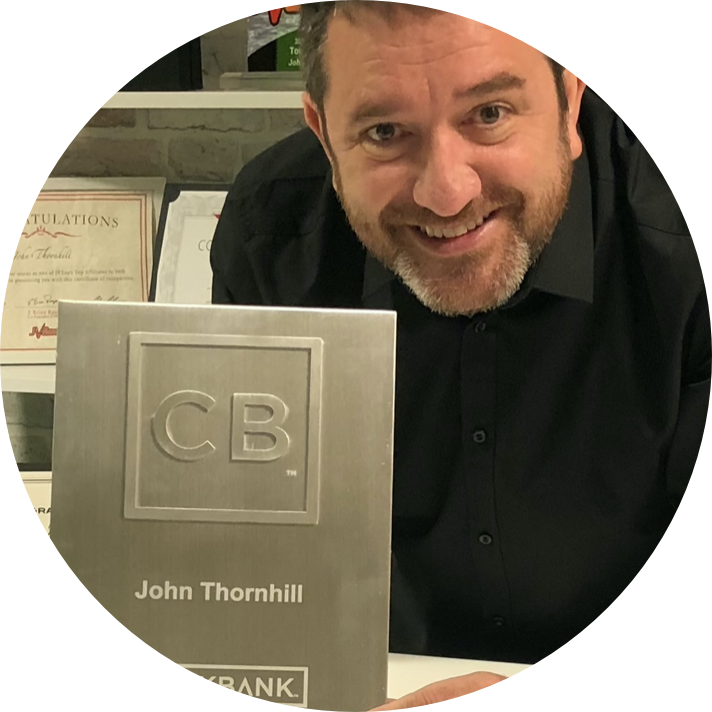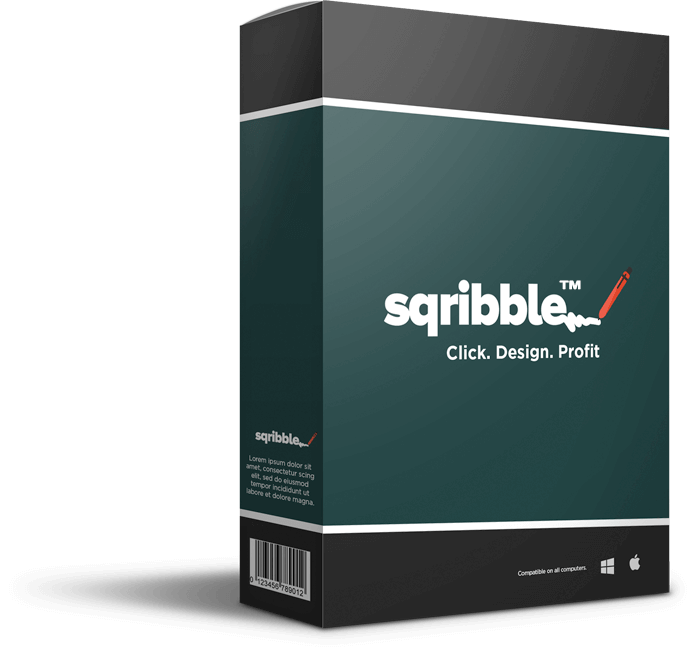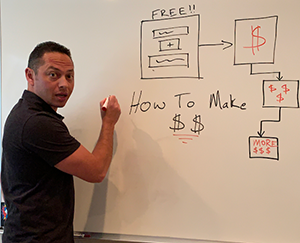How To Build A Successful Online Community written by Tosin Jerugba read more at Duct Tape Marketing
The Duct Tape Marketing Podcast with John Jantsch In this episode of the Duct Tape Marketing Podcast, I interviewed Andrew Guttormsen the Co-founder of Circle: the All-in-one community platform for professional creators and world-class brands. Formally the VP of Growth at Teachable, Andrew has a deep background in courses, online marketing, memberships and building growth […]
How To Build A Successful Online Community written by Tosin Jerugba read more at Duct Tape Marketing
The Duct Tape Marketing Podcast with John Jantsch
In this episode of the Duct Tape Marketing Podcast, I interviewed Andrew Guttormsen the Co-founder of Circle: the All-in-one community platform for professional creators and world-class brands. Formally the VP of Growth at Teachable, Andrew has a deep background in courses, online marketing, memberships and building growth marketing teams.
Together we shed light on community mastery, onboarding excellence and how platinum communities excel in keeping members for the long haul.
Creating a thriving online community requires more than just a platform – it demands a strategic approach to engagement, growth, and retention. In this insightful episode, we dive into the secrets behind Oprah’s Community Platform, exploring the platinum community blueprint that keeps members invested long term.
Key Takeaways
Discover the power of signature gatherings – the secret weapon of platinum communities, fostering a sense of connection and commitment among members. Unveil the mystery behind Oprah’s choice of a community platform with Circle, exploring the unique features and strategies contributing to her community’s success. Dive into the retention strategies employed by platinum communities, emphasizing consistent new member acquisition, onboarding excellence, and delivering ongoing value.
Explore the significance of onboarding in creating a seamless welcome experience for new members, learning from successful communities like Pat Flynn’s Smart Passive Income. Uncover the commitment required to deliver on promises made to community members, aligning community goals with member expectations for sustained success and stay tuned to this episode for a deep dive into strategies that can turn your online community into a thriving, engaged, and long-lasting digital space.
Questions I ask Andrew Guttormsen:
[01:04] Tell us a bit about your entrepreneurial journey
[02:33] What is the distinguishing characteristic between a community and its counterparts e.g. an email list?
[03:51] What is Circle?
[03:51] What is it like being recognized as the online community platform for Oprah daily?
[06:01] In the community benchmark survey, who do you survey and why?
[07:27] Define the Platinum community
[08:59] What are some of the best practices for gaining new community members?
[13:00] What are some of the best practices for creating offerings of value to members?
[14:43] How do you make onboarding a really engaging event?
[18:49] Explain how platinum communities succeed in maintaining retention
[18:49] Where can people connect with you?
More About Andrew Guttormsen:
Like this show? Click on over and give us a review on iTunes, please!
Connect with John Jantsch on LinkedIn
This episode of The Duct Tape Marketing Podcast is brought to you by Work Better Now
Visit WorkBetterNow.com mention the referral code: DTM Podcast,
and get $150 off for your first 3 months.
Hello and welcome to another episode of the Duct Tape Marketing Podcast. This is John Jantsch. My guest today is Andy Guttormsen. He is the co-founder and C-E-M-C-M-O of Circle, the All-in-one community platform for professional creators and world-class brands. Formerly the VP of Growth at Teachable. Andrew has a deep background in courses, online marketing memberships, and building growth marketing team. Andy, welcome to the show.
Thanks for having me. Been looking forward to this. Been on the calendar for a while.
Well, great. I’m glad to have you. I should be right up front and tell you that we have several circle communities. I don’t know if you were knew that or not, but we run our fractional CMO network on a Circle community. Give me a little bit of circle. Many people, teachable, I’m sure those are both brands many of our listeners are familiar with. What’s your journey to, I guess, to becoming a co-founder of Circle? What else have you done in your entrepreneurial journey?
When you start a new business, it’s almost predicated on this unique knowledge or secret or experience that you have that maybe feels unique to you and maybe it’s not obvious to others. And for us, that was that. If you really looked at all the top, let’s say, courses, creators, folks like that, when we were at Teachable where we spent four years, when you really dove into the data, what you realize is the folks that had the most revenue, they had the most repeat buyers, they had the happiest students, the raving fans. They also, what they really had is they had these kind of community experiences alongside of it. And so that was really interesting. At the time, there actually weren’t that many community platforms. There were course platforms with book groups, and then you’d have all the ads and distractions, there’d be Slack groups, but there wasn’t this kind of holistic experience. And so we decided, hey, what if we create this little product where maybe you have a community experience, you can drop it into a course platform. And that’s how we started Circle. So it was really just a small little kind of mini product to begin, which turned into a business later. As the idea evolved,
There’s a lot of buzz around the term community. There has been probably for the last five, 10 years even. How do you distinguish, I mean, what’s the unique distinguishing characteristic of a community as opposed to an audience or an email list or some other vehicles that we’re familiar with?
So communities really refer to groups of people who are connecting with each other. A lot of times they’re on one singular mission together. There’s something that brings them all together. And so when you look at communities, you often see that there are these, a lot of times the way you get values, there’s what we call signature gatherings. There’s maybe two or three signature gatherings that they may have every week or every month. But the members, they know each other. And so for me, if I have an audience, I have a relationship with one of them, with all of them. It’s a one-to-one relationship with these community experiences, the best of memberships, the best cohort-based courses, the students, they’re connecting with each other. The members are getting value from each other, and so it’s unlocking a whole different dimension.
Yeah, I’ve heard people say that’s when you know really have a community is when they’re talking as much to each other as they’re certainly talking to whoever facilitates.
Totally. It takes a lot of the pressure off you as the person running the community. Yeah,
Yeah. So what’s the 32nd pitch of what is Circle? And maybe even talk a little bit about what you’ve become, you’ve grown to, because obviously it was started as an idea, but now it’s become a pretty significant business.
So when we look back at the last four years or so when Circle started, we’ve grown from having a handful of just creators who we were friends with and signed up for Circle as a favor to having 10,000 plus customers. Everybody from this small little kind of individual, one person businesses and creators to folks like Oprah who literally became a customer yesterday and everything in between and circle. When we look at what it actually does, what is Circle? Well, it’s kind of a home for your community. It’s your town hall. It’s where you could do things like have live video streams. You can have discussions and interactions. You can create these moments for your members to connect with each other. You can do things like have a member directory in there. You can have your courses in there, but it’s a home to take this community vision that you have and bring it to life really quickly.
Alright, so I have to back up something you just said. I’m envisioning an onboarding specialist going, oh, that’s Oprah. How did that go about? Did somebody, I mean I’m guessing Oprah didn’t sign up, but somebody on a team signed up and what was the moment when somebody recognized? I think that’s Oprah win for each company.
Believe it or not, Oprah does not go and buy her own software. So we had somebody reach out from, it’s called Oprah Daily. It’s actually essentially a membership site for fans of Oprah. And so their team reached out looking for a community tool to enable that vision. And so then we went through a process with them and like we do with a lot of customers, actually
You recently did some survey, some research in your own communities about community. And I’m not going to unpack the whole research thing, but there were some findings in there that I think are pretty instructional for anybody who is mulling over this idea or heck, they’re full on into it and they’re trying to figure out how to do it better. So I wonder if we could talk a little bit about the survey itself. So set up first, who’d you survey? What were you trying to find out?
So I don’t know if you’re like me, John, but I like advice and I like opinions, but sometimes I just want to know what’s actually happening. I just want the data. Let me come to my own conclusions just looking at the raw data and I want to know what’s working. And so what we did is we took all of our customer data. We have 10,000 communities on circle. We actually reached out, we did a survey with close to 700 of those communities and we put together this 87 page report, which essentially all these proprietary findings and essentially what it is, it’s like what do we call kind of these platinum communities, which are the ones that are the top compared to everybody else? What do they do differently? And so the report, it took months and months to put together, but actually we released it today. Probably the timing probably be off here a little bit, but it’s available to everybody. We just made it free so that everybody can check it out and learn and it’ll better the community space
And we’ll have a link to it in the show notes. I have had the opportunity to go over the key findings and maybe I made notes on a couple that I think are really interesting that I’d like to know more about. So hopefully some listeners want to know more about ’em too. Well first off, let’s define that platinum community. Is that somebody that you saw growth that you saw very active membership, what got somebody into the platinum status?
A lot of times internally at circles, we’re talking about a lot of these customers who are doing really well. We know all their names, we have relationships with them and we look at them. Really how they’re different is that they have consistent new member acquisition. There’s demand for people to join the communities. They get onboarded really well. They immediately get value, they have really great retention. They stick around for a while, they talk about the community publicly, which kind of creates this almost flywheel effect of driving new acquisition. But I think if you had to really sum it up, it’s like if I’m running the community, these are the communities where the members feel like it’s a no-brainer to be part of it. They love, oftentimes it’s most of the time it’s paid community actually for the premium for the platinum communities and they love to put down their credit card and buy it. They get 10 times more value. And so that’s what these are, and we just really did it. It’s basically tied to revenue is essentially what it’s revenue and retention.
Okay. So a couple of the things, I don’t think some of the findings probably are not going to be surprises to people, but what are some of the things you saw, I dunno if they’re best practices, if that’s the right term, but everybody wants to get new members. That’s probably, especially somebody kicks off a community that they’re going to charge money for or even if it’s, it has maybe other purposes that lead to revenue. What are you seeing are some of the best advice for getting new members?
So the best communities, we talked a little bit earlier about this concept of signature gatherings. A lot of people, they’re overwhelmed. They’re thinking, Hey, I have to have so much stuff in my community. You have to deliver so much value. Actually, the best communities, what they do to acquire new members is they have three signature gatherings that are great. And a signature gathering could be so many different types of things, but it could be anything from a book club to a hot seat. One of my favorite signature gatherings would be a hot seat where there’s basically one person in a group with six or seven folks, I spend 30 minutes kind of talking about my business problem. Maybe it’s a gardening community, whatever it is. And then the other five or six people are there and they just solve that one person’s problem really valuable. And there’s all sorts where, hey, I bring in an expert once a week or maybe once a month or maybe for my golfing community, I have some experts in my community and even better, I elevate them. We all kind of vote on what the topics are and then somebody comes in or maybe I have a place for people to give feedback
And now a word from our sponsor. Work better now. Work better now provides outstanding talent from Latin America, hand matched to your business with over 40 roles across various industries, including marketing. They’re a reliable partner for consistently finding the perfect fit for your business. Simply tell them what you need and they’ll handle the rest. We have two work better now, professionals on our team, a marketing assistant and a marketing coordinator. And we’ve been blown away by their abilities, responsiveness and professionalism. They’ve really become an essential part of our growing team. And to top it off, each dedicated and full-time work better Now professional is 2350 per month and there are no contracts to schedule a 15 minute consultation with a work better now rep and see how they’ll support your business growth goals, visit work better now.com. Mention the referral code DTM podcast and you’re going to get $150 off for your first three months. That’s work better now.com. And don’t forget that DTM podcast code,
One of our top customers is a guy named David Perel. It’s a multimillion dollar online course community and it’s all for writers who are trying to really level up their writing game. And so you can go in there, you can write, get feedback on your work from all these writing experts, really valuable. And so we have, there’s 15 different signature gatherings, but the folks who do really well, they have maybe three signature gatherings that are incredibly valuable. They don’t try and do a whole bunch of other stuff on top of that. They just nail those. They charge what they’re worth and they really deliver on those three things. They do those three things well. And so that was one of the big learnings for us in of acquisition. The other kind of interesting acquisition is that actually the platinum communities don’t have more resources. So if you look at their teams, their budgets, what they do differently is they use multiple channels to acquire customers. So they use more channels in general than the bottom 90%. The other 90%, but they actually don’t spend more, which I thought was really promising is that you actually don’t need more budget. And by the way, actually they all use very little from a paid acquisition perspective, it tends to be other more organic channels and things like that.
And I suspect one of the beauties of events is they do tend to generate some word of mouth. People are talking about going to it, talking about what they got at it, talking about it after the fact with people they met at the event. And so I’m sure that actually creates buzz, which creates acquisition. I want to go back to something you said, or at least I heard. Maybe you didn’t say it this way, but I know for a lot of people you build one of these communities and you think, oh, I need to just pack it with all kinds of stuff so that people feel like there’s tons of value there. Especially if I’m going to try to ask for $79 a month or something. People need to feel like there’s just tons there. But I think I heard you say that that sort of counterintuitive that it’s actually in a lot of ways sometimes those are just overwhelming. Nobody gets any value, they can’t sort through it all. Or are you advocating for a much more minimalistic approach to what people get?
Absolutely. So high signal, less noise become almost known for those three signature gatherings that you’re great at. And by the way, it could be two or it could be five, but really figure out because it feels tempting to say, we’re also going to do this other thing. We’re going to have a book club or we’re going to bring in an expert. Maybe an expert isn’t right. And you also have to kind of tailor these signature gatherings to you and your personality. What’s the one that you can actually sustain because maybe for you, you really enjoy being in front of people and talking and all of that live. Great, well then bring in the experts, do the office hours, do the hot seats, all that kind of stuff. But maybe actually you’re more of like a writer written word. You don’t like being on camera, tailor it to kind of your personality and what you enjoy.
One of the things in a lot of cases, especially free communities, really easy to join, but we all know that it’s like a piece of software. I mean the better you get at using it, the more valuable it becomes to you. And I think communities are no different. So one of the findings was some of these platinum communities really focus on onboarding. So talk a little bit about what are some of the essentials there not enough to just have a pinned post that says what to do when you get there. How do you make onboarding a really engaging event by itself?
So it’s a great question. I’m really happy you asked because I do think if you look at the top, let’s say 1% of communities, I actually think they’re the ones who nail it. And so I’ll give you one of my favorite examples is it’s a community for creators, business folks from a guy named Pat Flynn. It’s called Smart Passive Income, SBI pro community. And so Pat and his partner Matt, I think they do really an amazing job of onboarding where what they do, they almost treat it like when you’re a freshman going to college or university. So when I went to college, I was 18 years old and then I remember the next summer I was going to go or fall in the summer though, they do the freshman orientation, they bring everybody in, you meet all these different folks and then you got to get to know everybody so that when you join a month or two later, there’s familiar faces there.
You don’t feel like everything’s brand new. Matt and Pat, they do something very similar in their community. They have hundreds of members. It’s kind of a cohort type style where they bring people in quarterly or every other month. What they do is they get all these new members to get on a call and do an orientation before they even let them inside. The community is like weeks beforehand and everybody gets to meet each other. They all get to get to know each other’s goals. In that call, they set the expectations for what you should contribute in the community. Because with these memberships, it’s not just you saying, Hey, if you pay, you get access. A lot of times it’s a one-on-one application process. There’s a commitment there between not just for you to make the commitment but the member to make the commitment too. So it’s a two-way street.
So they all go through all the expectations, they meet each other. Then a few weeks later they get invited inside the community. Now when they get inside the community right away, there’s really three things that you have to accomplish as the person running the community. So the first thing is you want people to really understand the lay of the land. So how do they access the different signature gatherings and all those kind of promises that you made them, literally the practical nature, how do I get it done and get access to it? The next thing is that you want to kind of overdeliver on whatever they were expecting right away because if we were going into a new membership community, we’re judging, the first thing we’re doing is how does this feel? What do I see? Is it active? All that kind of stuff. And so you really have to get them a quick win.
And what Matt and Pat do is they have a new member checklist where they go down the list, check all these different things off. They say, Hey, go here, reach out to this person, connect with this thing, consume this information. And then what you can do is you can have them go through a new member checklist. You can actually say, when you go through this new member checklist, I want you to send me a dmm. And then you can go in DMM them and give them some type of gift or something like that, right? The second thing you need to do is you need to generate. And so that’s, sorry, the third thing. So that’s the second thing, which is literally have them go and get a quick win. The third thing is have them connect with somebody. So have them meet another member. Now a lot ways you can can make the one-on-one introductions.
You can say, Hey, I think you should meet this person, reach out to them. Other thing you can do is you can go and introduce them. So a lot of people say, Hey, go and introduce yourself in the community. Totally fine. You can do that. Not the best though. Better thing to do is to use your kind of influence running the community, come in and then say, Hey, here’s all these great things about John. Here’s why John’s in the community. This is what I know about John and how he can deliver value and make an intro for your member, but connect them with somebody. Get them on a call that first day. So it’s a lot of positive reinforcement right away and removing that doubt.
A lot of things, successful communities take work. They’re not just thought out, but obviously continue to listen, continue to add things, continue to take feedback. Another thing, another topic in your research was retention. Obviously there’s nothing worse than adding two members and losing two members in the same day. So what are some of the things that you have discovered from these platinum communities in terms of how they really focus on retention?
It’s really funny because we did, as part of the survey, when we looked at the platinum communities and everybody else, we ask everybody, what’s your goals? And the platinum communities, I think we’re a hundred double twice as likely to say that retention was one of their top goals. But you can think about it. If you have a hundred members and you turn 10% of those members every single month, by the end of the year, all your members are gone. So it’s really important. But I actually think retention happens upfront mostly when you bring in your members and can you bring in the right people? And when you make that promise, because it’s going to be on your community landing page and all of that, did you acquire the right folks? And so I think one of the best ways to do this, if you look at, let’s say Jay Klaus, who’s one of our top community admins, has a great community.
He talks to every single person upfront and he has them apply sets, all the expectations, all of that. And so they know, he will tell ’em, don’t come in unless you’re coming for a year because an annual membership. And so I think by choosing the right folks, you will have better retention. But then it’s just like, can I deliver on my signature gathering? So some people want to have these ongoing recurring memberships that deliver over and over again every month, and that’s really admirable. It’s really hard to deliver on, but when you deliver on it, you can really stand out. And so I love that model. But if you look at other models, there are plenty of communities that actually they don’t need retention beyond that because there’s a start and a finish. Everybody’s together on a mission for 30 days or 90 days, or there’s something outcome. And so not every community has to have ongoing retention that spans years. Sometimes just 30 days is enough to deliver on some really big promise and transformation for the members.
Yeah. Andy, I appreciate you taking a few moments to stop by the Duct Tape Marketing Podcast. Where would you invite people to connect with you and learn more? Well, we’ll have a link to the survey that you’re giving away in our show notes, but is there anywhere else you’d invite people to connect with you?
Sure. You can reach out to me anytime. My email is just Andrew at circle and come to circle. So if you ever want to learn about this community stuff and there’s tons of free resources there. But John, thank you so much for having me on. It was really great to get to chat with you.
Yeah, absolutely. Again, thanks for stopping by and hopefully we’ll run into you one of these days out there on the road, or I guess in your case, maybe in one of the communities.
Sign up to receive email updates
Enter your name and email address below and I’ll send you periodic updates about the podcast.
Recommended Story For You :

How To Make $3493 Commissions Without Doing Any Selling

Successful dropshippers have reliable suppliers.

People Think I Use A Professional Voiceover Artist. NO! I Just Use Speechelo!

Make Money Testing Apps On Your Phone Or Tablet

Make More Money or Lose Everything

Sqribble Is The ONLY eBook Creator You’ll Ever Need.

Work & Earn as an Online Assistant

Create Ongoing Income Streams Of $500 To $1000 Or More Per Day

It's The Internet's Easiest Side Business.






